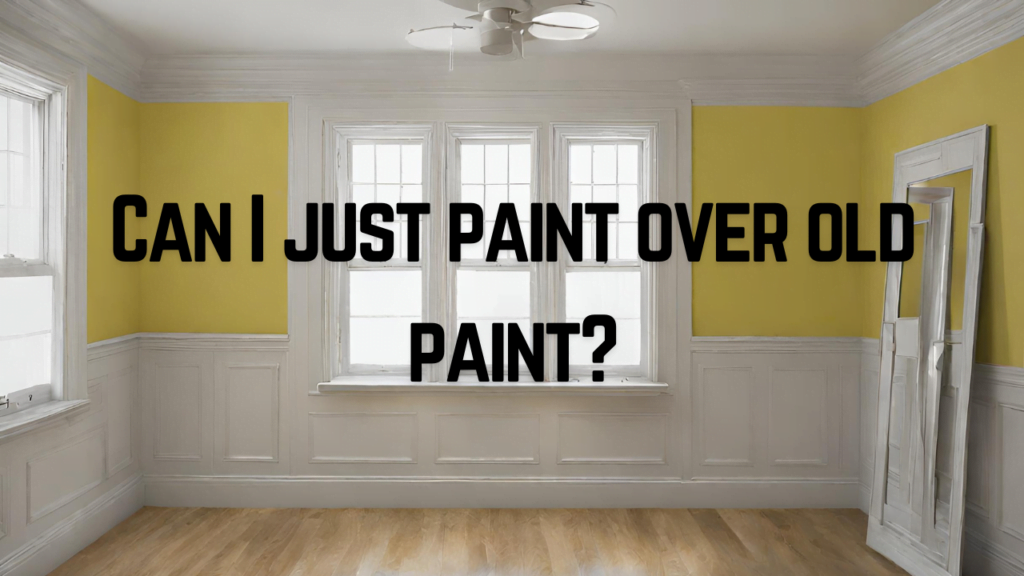
Can I just paint over old paint? Painting can be a fantastic way to refresh the look of your home or business space. A fresh coat of paint can work wonders if you’re aiming for a new color scheme or want to cover up scuffs and marks. But what if you’re dealing with existing paint? Can you paint over old paint? This article will delve into this common question, providing expert insights, tips, and considerations for a successful painting project.
Can I just paint over old paint?
Yes, you can paint over old paint, but some essential factors must be considered before grabbing that paintbrush. Let’s explore the benefits, maintenance, responsibilities, and answers to common questions about painting over old paint.
Benefits of Painting Over Old Paint
Time and Cost-Efficient: Painting over existing paint can save you time and money compared to stripping off the old paint entirely.
Fresh Look: It’s an excellent way to give your space a fresh, updated appearance without extensive renovation.
Less Mess: Removing old paint can be a messy and labor-intensive process. Painting over it eliminates this hassle.
Maintenance and Preparation
Before you start painting over old paint, there are essential maintenance and preparation steps to ensure a successful outcome.
1. Surface Inspection: Examine the old paint for cracks, peeling, or bubbling. If you notice significant issues, it’s essential to address them first.
2. Cleaning: Clean the surface thoroughly to remove dirt, grease, and grime. A clean surface ensures better paint adhesion.
3. Sanding: Lightly sand the old paint to create a smooth and even surface. This step also promotes better paint adhesion.
4. Primer: Applying a high-quality primer is crucial, especially if the old paint is glossy or if you’re painting over a drastically different color.
Responsibilities and Safety
When embarking on a painting project, being aware of your responsibilities and ensuring safety is important.
1. Lead Paint: If your building was constructed before 1978, lead-based paint is possible. Ensure proper precautions and, if necessary, consult a professional for lead paint testing and removal.
2. Ventilation: Proper ventilation is essential when painting. Open windows and doors to ensure good airflow and minimize exposure to paint fumes.
3. Protective Gear: Wear appropriate protective gear, including gloves, goggles, and a mask, to protect yourself during the painting process.
Common Questions
Let’s address some common questions related to painting over old paint:
1. How Many Coats Should I Apply?
Two coats of paint are typically recommended for a uniform and durable finish.
2. Can I Paint Over Wallpaper?
Painting directly over wallpaper is generally not recommended, as it can lead to adhesion problems. Remove the wallpaper or use a wallpaper primer before painting.
3. Do I Need to Sand Between Coats?
If you’re using high-quality paint, sanding between coats may not be necessary. However, lightly sanding can help achieve a smoother finish.
Conclusion
In conclusion, painting over old paint can be a viable and cost-effective option for refreshing your space. However, proper preparation, maintenance, and safety measures are crucial for a successful outcome. If you have any questions or need assistance with your painting project, please contact Fife Trades for a quote today. You can message them at fifetrades@gmail.com or visit their Contact Us page at Contact Fife Trades.
For more information about Fife Trades and their services, you can also check out their About Us page at About Fife Trades and explore their range of services at Fife Trades Services.
Happy painting!
